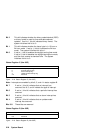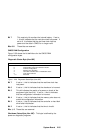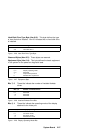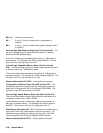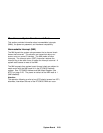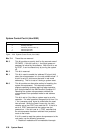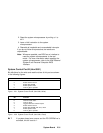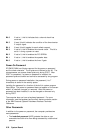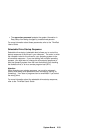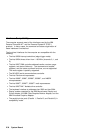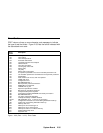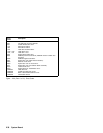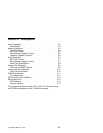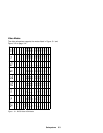Bit 6 If set to 1, this bit indicates that a channel check has
occurred.
Bit 5 If read, this bit indicates the condition of the timer/counter
2 ‘output’ signal.
Bit 4 If read, this bit toggles for each refresh request.
Bit 3 If set to 0, this bit enables the channel check. This bit is
set to 1 during a power-on reset.
Bit 2 If set to 0, this bit enables the PCI SERR#.
Bit 1 If set to 1, this bit enables the speaker data.
Bit 0 If set to 1, this bit enables the timer 2 gate.
Power-On Password
RT/CMOS RAM has 8 bytes reserved for the power-on password
and the check character. The 8 bytes are initialized to hex 00. The
microprocessor can access these bytes only during POST. After
POST is completed, if a power-on password is installed, the
password bytes are locked and cannot be accessed by any program.
During power-on password installation, the password (1 to 7
characters) is stored in the security space.
Installing the password is a function of the built-in system program
Easy-Setup
. The power-on password does not appear on the screen
when it is installed, changed, or removed. After the power-on
password has been installed, it can be changed or removed only
during POST.
The computer also can have a keyboard password. For more
information, see the keyboard and auxiliary device controller section
of the
IBM Personal System/2 Hardware Interface Technical
Reference
.
Other Passwords
In addition to the power-on password, the computer provides two
more passwords:
The hard-disk password (HDP) protects the data on your
removable hard disk drive from being accessed by unauthorized
persons.
2-32 System Board



